
Review on 🔧 SCITOO Engine Spring Installation Tool Kit for Petrol OHV OHC, Car Engine by Chris Walker

Ideal for vw/audis in a pinch.
If you have a 1.8T (Audi or VW) these tools will work to compress those valve springs. Things you should know before ordering. I only had 6 screws. 3 of the same size, 3.6mm - 1.0 x 30. You will need 4 in total to install the horseshoes to the motor. You can use cam bearing bolts but I would suggest buying 4 6mm 1.0x20 bolts for this (preferably stainless so you don't rust the motor next time) and use those. When using this on a 1.8t engine I center it between the exhaust and intake valves on the main camshaft bearing and the last holes in the cover closest to the VVT. It will be a little off center, but that's ok. For the intake valves I stuck a rod in the middle of the top of the horseshoe and used the center hole in the lever. This allowed for the right angle to really push the valve retainers away from the retainers. For the exhaust valves, I moved the pin to the 2nd end hole to separate them. This tool didn't come with instructions, which is one of the biggest caveats. I wasn't very familiar with using this setup. Basically you screw the horseshoes in where you want (don't forget to buy screws so you don't mess up the cam screws you pulled out). I decided to screw them to the 1st and last inner inlet/outlet cap. Then the rod moved parallel to the center of the head (between the exhaust and intake valves). If you are working in a car, remove the spark plug and insert the adapter into the spark plug hole of the cylinder you are working on. on. Hook up an air compressor and pressurize the cylinder (don't know what pressure). There's also an adapter for diesel engines, it works the same way (except it obviously doesn't fit the spark plug hole. I'm assuming it either goes where the injectors go, or maybe where the spark plugs glow). If you don't do this, there is a high risk of losing the valves in the cylinder. If you do, you can use a magnet to fish them out, otherwise you'll have to rip the head off. Work valve by valve, cylinder by cylinder: remove valve spring/retainer/retainer, remove valve seal, clean, install new valve seal, reinstall valve spring/retainer/retainer, then move on to the next in that cylinder. After all the parts for that cylinder have been reinstalled, move the spark plug adapter to the next cylinder or you risk losing a valve in the engine. If you're doing this with the head removed (like I did), secure the head to a wooden work surface (or other surface that won't scratch the cylinder head mating surface. You can keep the head stable by using a C-clip attach the piece of wood to the headboard and under the wood countertop.. You will probably need to remove the clamp and move it along the way. After that you will guide the rod from horseshoe to horseshoe so that it is on top of the motor." (I'm not sure what the technical name is but I think it's a scientific term) and attach it to the red lever with one of the pins provided. The pins don't fit but they work. You tuck the rounded end of the lever under the shaft , the bushing on the valve holder and you pull down, this is where you need to make sure the bushing goes in at the right angle when you lower the lever into the valve holder, which rounds that out te end of the lever holds in the shaft and lowers i the other end up the holes where the pin will line up. Then I pushed, grabbed both goalkeepers with a magnet and gradually gave up. Then I put the parts in a ziploc bag labeled for that specific valve for that specific cylinder (which is inconvenient because you have to constantly unscrew the clamp). a place to put a stop pin so my bushing doesn't fall off as I move from valve to valve. That being said I had to remove the pin when changing from intake to exhaust valves and adjusting my position on the lever so it might be cumbersome but it would be nice. I will buy a cotter pin for this purpose. I also wish the bar had room for a locking pin on each end so I know it doesn't slip out. It's never slipped (although it could easily happen if you're not careful), and some want to change the position of the horseshoes fairly frequently for some reason I don't know, so it may be impractical in some cases, but again, would be an option Well. I will drill my rod to insert the locking pins. I also wish this tool had different removable bushings for different size valves. In this case it worked fine, but I'd like an option. It's also cheaper than competitor tools, it was the best fit and I needed it in a hurry, it did the job. I would recommend it to anyone who needs to disassemble valves from time to time.
- FUNCTION - Used with engine and vehicle spring installer or spring installer. The tool bolts to the head while the arm pivots from the base to complete the quick installation of the retaining springs.
- Don't really like it, everything is fine
New products
Comments (0)
Top products in 🛠️ Engine Tools
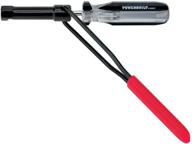
🔧 Honda Valve Adjusting Wrench 10mm by Powerbuilt

9 Review
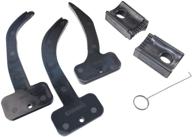
DPTOOL 6PCS Camshaft Phaser Timing Chain Tools for VW Chrysler Dodge 3.6L 10200A+10202 High Performance Engine Kit

9 Review

💪 Lisle 39000 Pulley Puller: The Ultimate Tool for Convenient Pulley Removal

9 Review
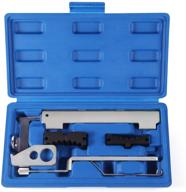
BETOOLL Camshaft Tensioning Alignment Chevrolet

9 Review
Another interesting products
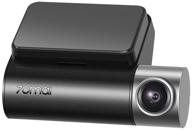
DVR 70MAI Dash Cam Pro Plus+, black (A500S), black

87 Review
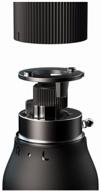
Xiaomi Mijia Ratchet Screwdriver 16 in 1 Screwdriver with Interchangeable Bits, 10 pcs, Black

22 Review
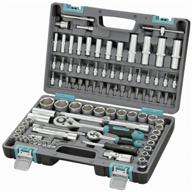
Bit and socket set Stels Tool set, 1/2", 1/4", CrV, plastic case 94 pcs, Stels, 94 pcs, black

46 Review
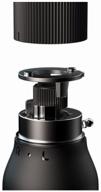
Reversible Mi 16-in-1 Ratchet Screwdriver

21 Review

